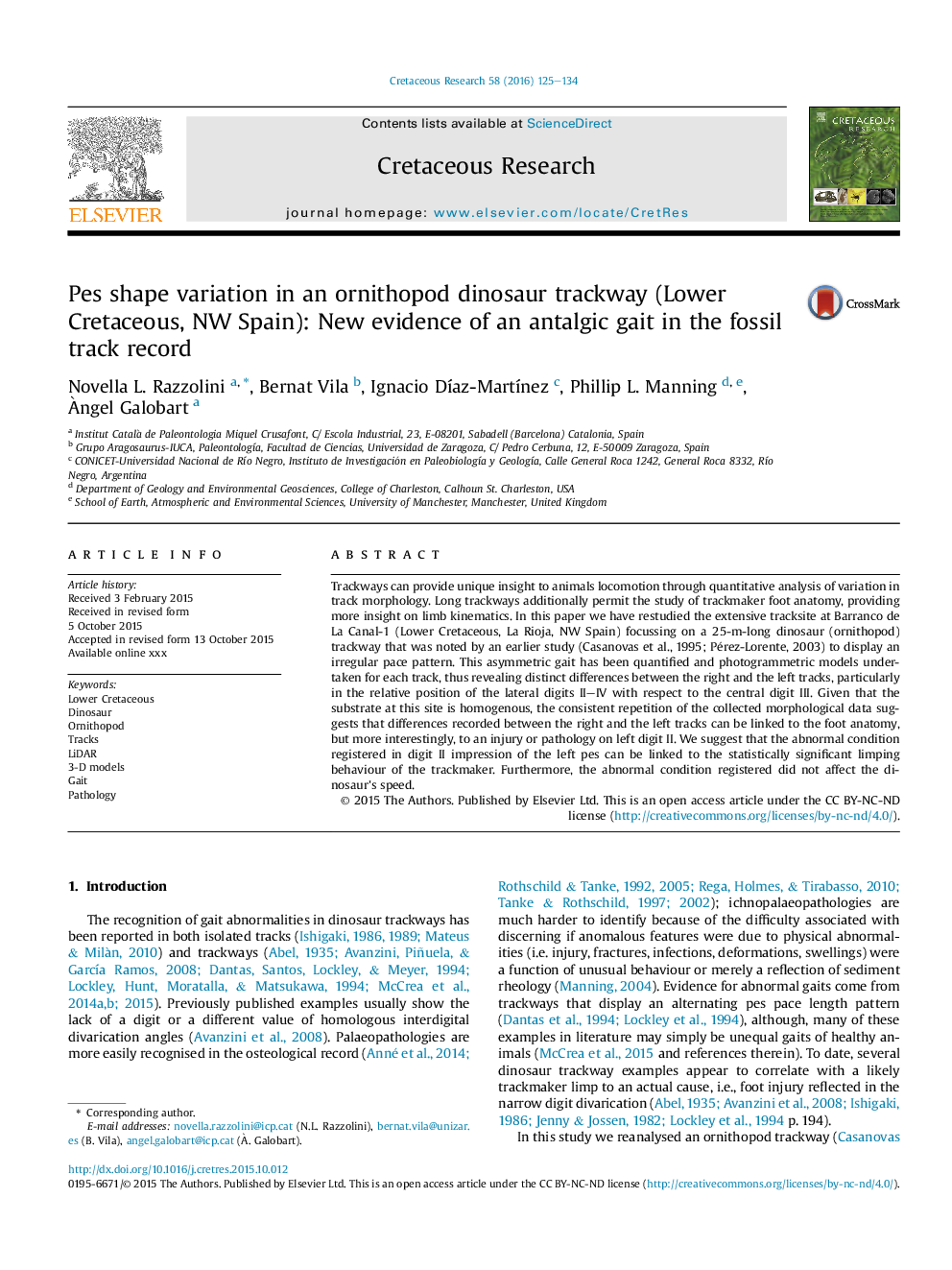| Article ID | Journal | Published Year | Pages | File Type |
|---|---|---|---|---|
| 6448206 | Cretaceous Research | 2016 | 10 Pages |
Abstract
Trackways can provide unique insight to animals locomotion through quantitative analysis of variation in track morphology. Long trackways additionally permit the study of trackmaker foot anatomy, providing more insight on limb kinematics. In this paper we have restudied the extensive tracksite at Barranco de La Canal-1 (Lower Cretaceous, La Rioja, NW Spain) focussing on a 25-m-long dinosaur (ornithopod) trackway that was noted by an earlier study (Casanovas et al., 1995; Pérez-Lorente, 2003) to display an irregular pace pattern. This asymmetric gait has been quantified and photogrammetric models undertaken for each track, thus revealing distinct differences between the right and the left tracks, particularly in the relative position of the lateral digits II-IV with respect to the central digit III. Given that the substrate at this site is homogenous, the consistent repetition of the collected morphological data suggests that differences recorded between the right and the left tracks can be linked to the foot anatomy, but more interestingly, to an injury or pathology on left digit II. We suggest that the abnormal condition registered in digit II impression of the left pes can be linked to the statistically significant limping behaviour of the trackmaker. Furthermore, the abnormal condition registered did not affect the dinosaur's speed.
Related Topics
Physical Sciences and Engineering
Earth and Planetary Sciences
Palaeontology
Authors
Novella L. Razzolini, Bernat Vila, Ignacio DÃaz-MartÃnez, Phillip L. Manning, Ãngel Galobart,
